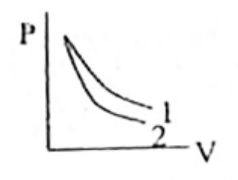In the following plots match I,II, III,Iv with (a) isothermal process and Adiabatic process for (b) monatomic, (c ) diatomic and (d) triatomic gases respectively.
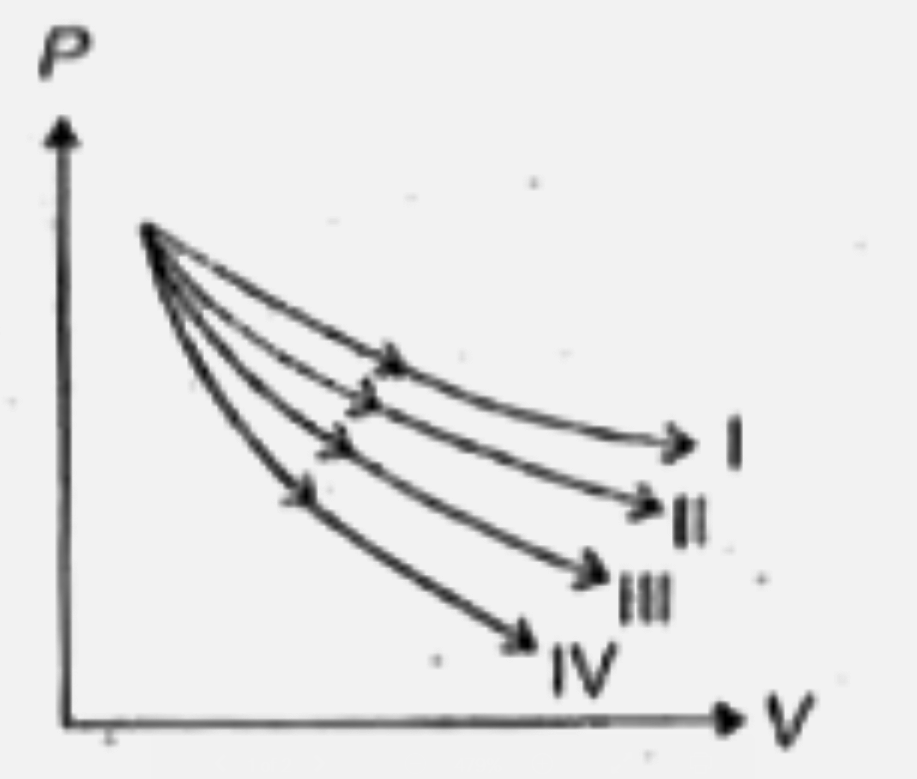
For isothermal process pV = const. (∴n=1) (Note all the above graphs are basically pV^n = const. piotted)
For Adiabati process pV. = const. Now,
For monotomic gas γ=53=1.66(∴n=1.66)
For diatomic gas γ=75=1.4(∴n=1.4)
and for triatomic gas γ=86=1.33(∴n=1.33)
In expansion p-V graph we know that as the value of .n. increases the plot keeps coming down.
So, we can represent the graphs as follows :
Hence the final answer is that
Plot I. is isothermal process
Plot II is Triatomic adiabatic
Plot III is diatomic adiabatic &
Plot IV is monoatomic adiabatic.

Similar Questions
Knowledge Check
P-V plots for two gases during adiabatic processes are shown in Fig. 15.9.6. Plot 1 and 2 should correspond respectively to
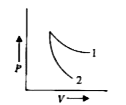 AHeandO2BO2andHeCHeandArDO2andN2
AHeandO2BO2andHeCHeandArDO2andN2
Write down the relation for an adiabatic process in terms of (i) P and V (ii) T and V and (iii) P and T.
View SolutionThe internal energy of a system remains constant when it undergoes
(i) a cyclic process
(ii) an isothermal process
(iii) an adiabatic process
(iv) any process in which the heat given out by the system equal to the work done on the system
View Solutionp-V plots for two gases during adiabatic processes are shown in the figure. Plots 1 and 2 should correspond respectively to
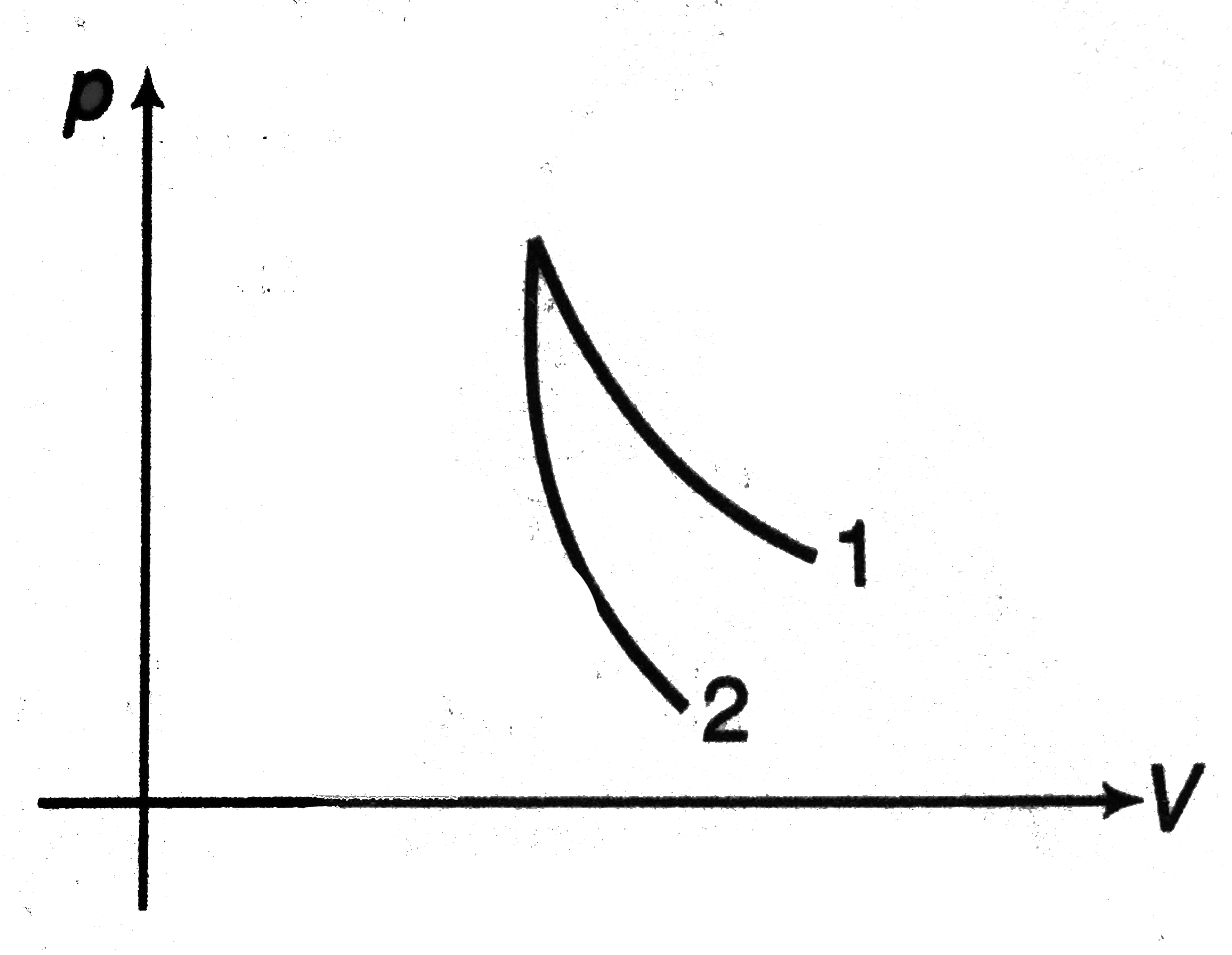
View SolutionP-V plots for two gases during adiabatic processes are shown in the figure. Plots 1 and 2 should corresponds respectively to
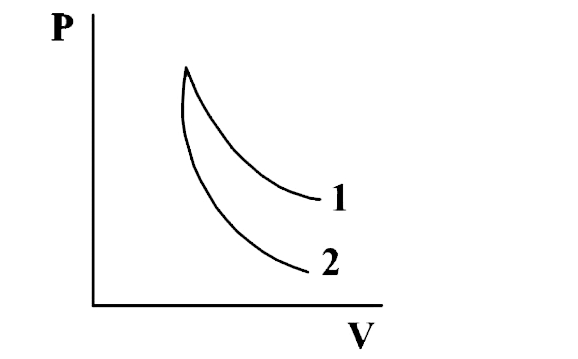
View SolutionConsider the following cyclic process.

I. Isothermal , II. Adiabatic , (III) constant pressure process
Sum of the work and heat in the above is:
View SolutionThe carnot cycle of a reversible heat engine consist of
A. one isothermal and two adiabatic processes
B. Two isobaric and one adiabatic processes
C. Two isothermal and two adiabatic processes
D. Two isobraic and two isothermal processes
View SolutionThe curves A and B in the figure shown P-V graphs for an isothermal and an adiabatic process for an idea gas. The isothermal process is represented by the curve A.
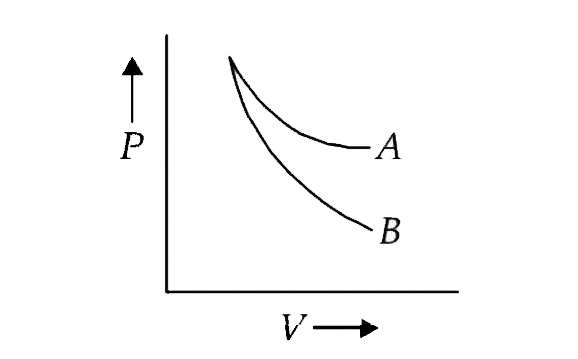
View Solution
